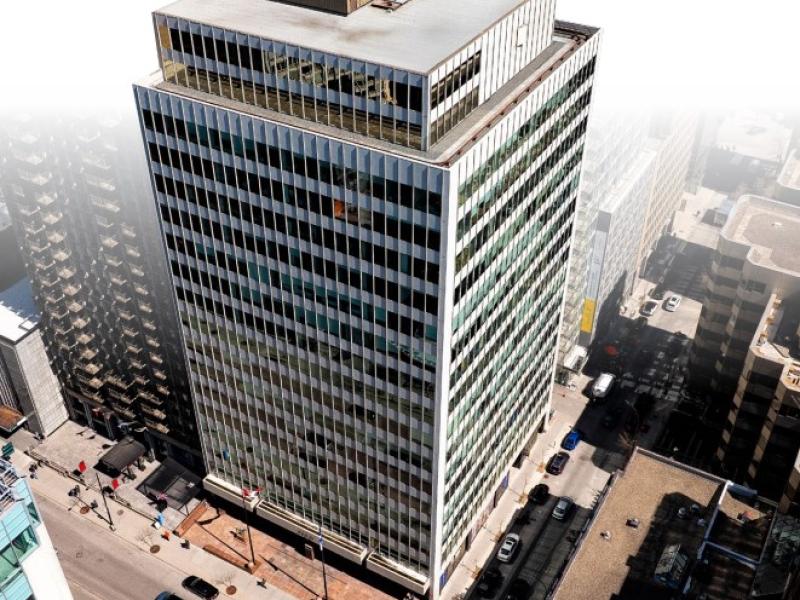Ottawa may have a reputation as a city that still thinks it’s a town, but as anyone who visits soon realizes, it has major sprawl.
 That makes it an expensive construct for a municipal government to service and maintain. The nation’s capital might not make headlines about an overheated housing market like Toronto and Vancouver, but it does share the growing pains of Canada’s other major urban centres.
That makes it an expensive construct for a municipal government to service and maintain. The nation’s capital might not make headlines about an overheated housing market like Toronto and Vancouver, but it does share the growing pains of Canada’s other major urban centres.
The in-migration trends of recent years have put new pressures on services, infrastructure and budgets.
Ottawa is answering this challenge in part by investing billions (with co-investments from the provincial and federal governments) in a new light rail transit system.
City Hall is eager to see how it can recoup some of that cost by hiking the development charges levied against developers and trying to shave costs in how new suburban neighbourhoods are planned and built.
There is plenty of debate within the development community over where the funds should be spent in relation to where they are charged.
Focusing on where money is spent is a worthy effort. We do need to rethink our urban planning practices, and not just in Ottawa.
I only question if City Hall is taking the right approach.
Good ideas that don’t tackle the deeper problem
Early last month, the public was given a glimpse of what the City of Ottawa has in mind with the highlights from a work in progress called Building Better and Smart Suburbs.
One idea is to give bicyclists their own laneways instead of building wider roads to accommodate them, because it costs a lot more to build a foot of road suitable for vehicular traffic than it does a foot of bike path.
Then there are proposals to eliminate medians from the middle of low-speed roads, put manhole covers further apart, use sump pumps in homes to reduce the need for storm drains and let school drop-off zones be built roadside on city property, instead of requiring them to be on the school’s own land.
Curb sprawl and increase density
All these ideas have merit, but they only nibble at the edges of a deeper problem when it comes to curbing sprawl, increasing density and reducing the costs of servicing new communities.
Current land-use policies dictate everyone gets their own box in new developments. From public schools to community centres, hospitals and even storm ponds, parcels of land are cleaved off and held for specific public uses, all separate from one other.
The result?
We end up building new stretches of road and infrastructure without adjoining revenue (homeowners or business owners alongside who are paying taxes) to cover the cost. It creates more demand for roads and more road congestion.
A lose/lose for City Hall
One of my land development colleagues told me earlier this week there was once a time when 60 to 70 per cent of the land in a new development was earmarked for residential/commercial.
Today, that number is averaging 50 per cent or even less. This is a lose/lose for City Hall which reducing the number of medians and manhole covers can’t address.
How can we address it?
Consider combining land plots designated for public land uses like schools, parks and storm water management. All public facilities should be designed with the potential for alternate contemporaneous uses to minimize the amount of public land and the cost of its maintenance.
Increased yield of development sites will increase assessable development land and increase net tax yield versus non-taxable public property. Greater density will also encourage more successful commercial/retail development for a successful “Main Street” vibe.
“Main Street” vibe evident in Westboro
This is certainly the case where I live in Ottawa – a mature and dense neighbourhood called Westboro.
One City of Ottawa idea on the table definitely has merit – the separation of road, bicycle and pedestrian traffic. It not only saves money, it also addresses significant public safety issues.
(I don’t know about you, but I think it’s the Wild West out there. Too few cyclists or drivers understand their responsibilities to each other and desperately need some re-education.)
Also, the stormwater management issue could be better addressed with passive solutions such as soft and permeable surfaces that allow rain and melt water to soak into the ground instead of turning streets into tidal pools and contributing to overland flood risk.
My driveway, for example, uses paving stones instead of asphalt. Water never pools or runs off, no matter how hard it rains.
The impact of the driverless car
Urban planners must also consider the impact of self-driving cars on urban parking demand. As I have noted before, most cars spend 95 per cent of their time parked and waiting.
But fleets of autonomous cars could shuffle around like public transit. In this future world, nobody would need to own a car, they would just call for one on an app when they need it.
Cars are always in rotation, going from one user to another. Think about that – does that eliminate the need for parking lots, parking garages, even your driveway?
By some estimates, the need for 90 per cent of current parking will be eliminated.
Many of us will, of course, never willingly give up the sense of ownership and freedom that comes with driving your own vehicle. But bear in mind the modern suburban landscape has been defined by our love affair with the automobile and that relationship is about to undergo a profound change.
It’s time to stop nibbling at the issues with suburban development and take a big bite.
To discuss this or any other valuation topic in the context of your property, please contact me at jclark@regionalgroup.com. I am also interested in your feedback and suggestions for future articles.







